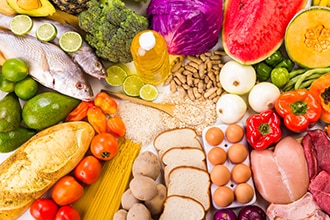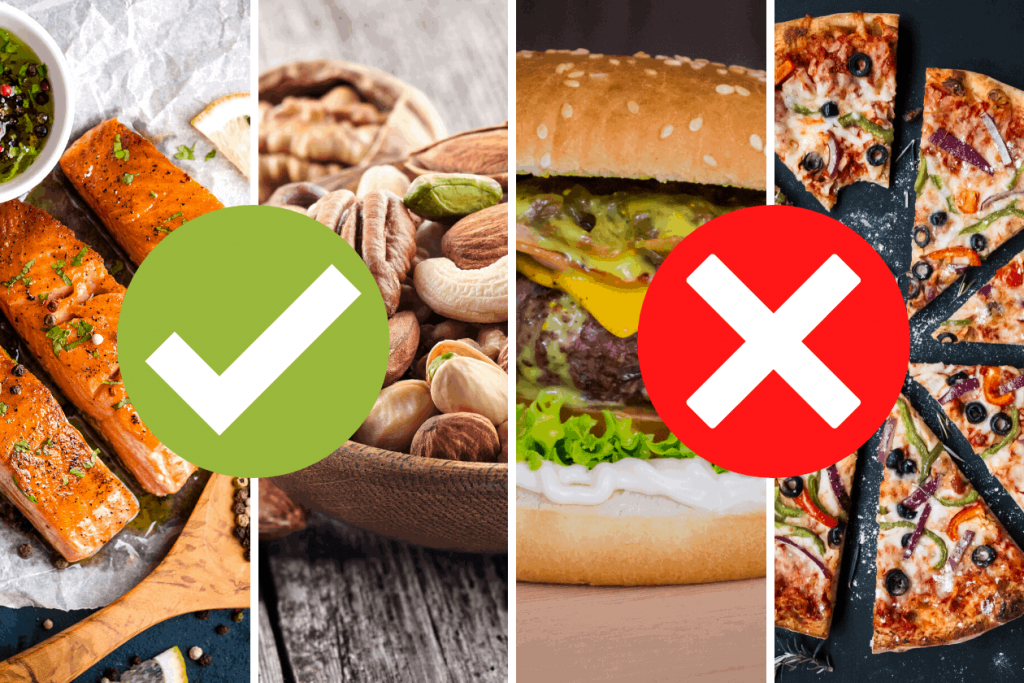
In the first trimester it is essential to consume at least three- to five servings daily of fruits, vegetables and other healthy foods. Green peas, spinach, and broccoli are all good choices. The high amount of folic Acid in spinach makes it a particularly good choice. Broccoli is good for the baby as it contains plenty of iron. While it's not recommended for women who are pregnant with hypothyroidism or for anyone else, it's safe for everyone. Other first trimester foods to avoid include tomatoes, red, green, and yellow bell peppers, sweet potatoes, and avocado.
For the first trimester, a healthy diet should include plenty of whole grains as well as lentils. These will provide all the necessary nutrients that your baby needs in order to grow and develop. It is important to get at least two servings of protein daily during the first three trimesters. These foods include eggs and dairy products. These are some foods that you can avoid during this period.
A prenatal nutritionist can help you make sure your baby's needs are met. A nutritionist is able to help you select the best diet and advise you on how you can eat when you are pregnant. A healthy diet will ensure a healthy baby and a happy delivery. Being a mom is exciting in the first trimester.

As a mom, it is important to reduce your intake of fatty and processed meats. Raw meats and deli meats can be harmful to a developing baby, so always ensure they're cooked to a steaming hot state. Avoid shellfish, sashimi, or sushi. Mercury-rich fish should be avoided. Additionally, avoid raw eggs, oysters, shark, and shark.
These fish can be tempting to consume, so don't. They can cause your baby's stomach to become ill. This is a natural reaction to hormones. However, it is important to take into account your stage to decide what food you should eat. The most important thing to do is to eat a wide variety of healthy foods. Focusing on a variety and eating fruits and vegetables is key, as well as avoiding fatty foods.
During the first trimester, your baby grows the most, and you should make sure you eat plenty of protein. If you plan on having a baby, it is a good idea to take a prenatal Vitamin and eat iron-rich foods. Fish and lean meats are good options, as they have more iron than any other type of meat. Avoid fried foods and processed foods during the first trimester.
Be sure to inspect labels when choosing foods for the first trimester. While most meats are safe to consume during the second trimester, there are some items that you should avoid. Listeria bacteria can be found unpasteurized dairy products. These products can infect the unborn baby. Avoid soft cheeses with white coatings on the exterior.

Avoid shellfish and raw fish. They can be a source of food-borne infections. However, you should avoid raw shellfish as it may contain harmful bacteria. These foods can be killed by cooking. You should also choose pasteurized milk products to protect your baby. These products can be purchased in stores if they are not available. Non-pasteurized products are also recommended to ensure safety for your baby.
Another important factor in the first trimester is your nutrition. In addition to eating a healthy diet, you should also avoid processed foods. You can get a lot of protein from fresh fruits and vegetables. Folates should be included in your diet. The folates found in these foods are essential for the proper development of the baby's nervous system. The U.S. Public Health Service recommends that pregnant ladies consume 400 micrograms of Folic Acid per day.
FAQ
What are 10 healthy behaviors?
-
Breakfast is a must every day.
-
Don't skip meals.
-
Maintain a balanced diet.
-
Drink lots of water.
-
Take care of your body.
-
Get enough sleep.
-
Stay away from junk foods.
-
Do some form of exercise daily.
-
Have fun!
-
Make new friends
What is the problem?
BMI stands For Body Mass Index. This refers to the measurement of body fat using height and weight. The following formula can be used to calculate BMI.
Add weight in kilograms to height in meters squared.
The score is expressed as a number between 0 and 25. A score of 18.5 or higher indicates overweight, while a score of 23 or higher indicates obesity.
A person who is 100 kg in weight and 1.75m in height will have a 22 BMI.
Is it possible to have a weak immune system due to being cold?
Cold causes a decrease in immune system strength. This is because white blood cells are less effective at fighting infection. Being cold can make you feel more comfortable because your brain releases endorphins which help reduce pain.
Here are 7 ways to live a healthy lifestyle.
-
You should eat right
-
Exercise regularly
-
Sleep well
-
Drink plenty of water.
-
Get enough sleep
-
Be happy
-
Smile often
What can I do to lower my blood pressure?
The first thing you need to do is find out what causes high blood pressure. Next, take steps that will reduce the risk. This could be as simple as eating less salt, losing weight, taking medications, etc.
Exercise is also important. Walking can be a good alternative to regular exercise if time is tight.
You should join a gym if you are unhappy with your exercise routine. A gym that has other members who are motivated by your goals will be a good choice. It is easier to adhere to a fitness routine when someone else will be there with you.
Statistics
- In both adults and children, the intake of free sugars should be reduced to less than 10% of total energy intake. (who.int)
- nutrients.[17]X Research sourceWhole grains to try include: 100% whole wheat pasta and bread, brown rice, whole grain oats, farro, millet, quinoa, and barley. (wikihow.com)
- According to the 2020 Dietary Guidelines for Americans, a balanced diet high in fruits and vegetables, lean protein, low-fat dairy and whole grains is needed for optimal energy. (mayoclinichealthsystem.org)
- This article received 11 testimonials and 86% of readers who voted found it helpful, earning it our reader-approved status. (wikihow.com)
External Links
How To
What does "vitamin" actually mean?
Vitamins are organic compounds that can be found in foods. Vitamins are essential for our bodies to absorb nutrients from the foods we eat. Vitamins are not made by the body, so they must be obtained through food.
There are two types: water-soluble and fat-soluble vitamins. Water soluble vitamins dissolve easily in water. These include vitamin C (thiamine), Vitamin B1 (riboflavin), Vitamin B2 (riboflavin), Vitamin B3 (niacin), Vitamin B6 (pyridoxine), Vitamin C, B1 (thiamine), Vitamin B2 (riboflavin), Vitamin B3 (niacin), and Vitamin B6 (pyridoxine). Fat soluble vitamins are stored in the liver and fatty tissue. These include vitamin D, E and K, as well as beta carotene.
Vitamins are classified based on their biological activity. There are eight major vitamin groups:
-
A – Essential for normal growth, and the maintenance of good health.
-
C is important for nerve function and energy production.
-
D - Vital for healthy bones and teeth
-
E - needed for good vision and reproduction.
-
K - Essential for healthy muscles and nerves.
-
P - vital for building strong bones andteeth.
-
Q - Aids in digestion and absorption.
-
R - necessary for making red blood cells.
The recommended daily intake (RDA), of vitamins varies with age, gender and physical condition. The U.S. Food and Drug Administration sets RDA values.
For adults over 19, the RDA for vitaminA is 400 micrograms per daily. Pregnant women require 600 micrograms daily to support fetal development. Children ages 1-8 require 900 micrograms per day. Babies under one-year old require 700 mg per day. Between 9 and 12 years of age, however, this drops to 500 mg per day.
Children aged between 1-18 years require 800 micrograms of sugar per day, while overweight children need 1000 micrograms. Children who are underweight receive 1200 micrograms every day to meet their nutritional requirements.
Children aged 4-8 years old who have been diagnosed as having anemia require 2200 micrograms of vitamin C per day.
2000 micrograms is the minimum daily intake for adults over 50 years old to maintain good health. Due to their increased nutrient needs, pregnant and breastfeeding women need 3000 micrograms daily.
1500 micrograms is the recommended daily intake for adults aged 70+, who lose approximately 10% of muscle each year.
Women who are pregnant, nursing or breastfeeding need more than the RDA. Pregnant women need 4000 micrograms per dayduring pregnancy and 2500 micrograms per day after delivery. Breastfeeding mothers need 5000 mg per day when breastmilk is being produced.